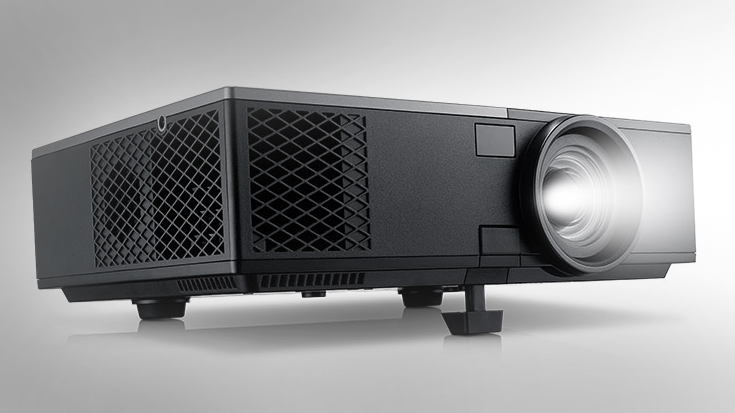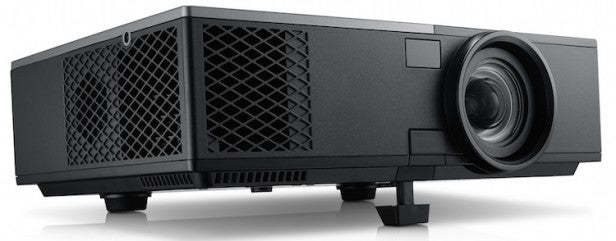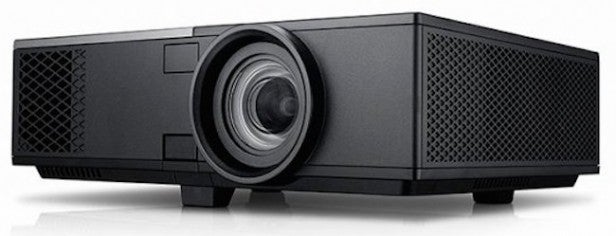Dell 4350 Review - Picture Quality Review
Picture Quality
Inject new life into your presentations with this ultra-bright projector

Sections
- Page 1 Dell 4350 Review
- Page 2 Picture Quality Review
- Page 3 Sound and Conclusions Review
Dell 4350 – Picture Quality
As noted earlier, the 4350 is pitched as a projector that’s capable of handling movies from time to time alongside the business presentations that are its main focus. And there are a number of features that support this cross-over notion. In reality, however, while the 4350 is decent – if a touch expensive – as a data projector, its video ambitions don’t really stack up.
Let’s start in the 4350’s comfort zone, with its handling of PC data sources. Our typical selection of test presentations and tables appear on the 4350 with impressive detail and sharpness. Text stands out against bright backdrops with excellent clarity and no significant ringing artefacts. Even the finest lines on our tables and graphs reappear with none of the ghosting, gapping or noise you may expect to see on projectors with a lower native resolution.
Colours look bold and clearly delineated with the relatively limited array of tones you tend to get in a typical business presentation. In addition, that huge 4,000 lumens of claimed maximum light output ensures your PowerPoint masterpieces look more than eye-catching to stop viewers from nodding off during your 50th slide of predicted market conditions in Kazakhstan.
Surprisingly, there also enough contrast in the image to let bright graphics within your presentations really pop. This could, say, allow you to include some quite interesting “spotlighting” tricks with presentations to make them feel more lively than they might on a less bright projector.
Presentations continue to look vibrant in ambient light and/or in a reasonably large meeting room too. Indeed, it’s this latter ability that probably goes further than anything else in justifying the 4350’s £1,099 price.
One final tick in the 4350’s presentations column is that there’s little sign of single-chip DLP’s common rainbow effect problem, where stripes of red, green and blue can flit over particularly bright portions of the image.
Unfortunately, the rainbow effect becomes readily apparent when you switch to video viewing, cropping up regularly and appearing with a high level of intensity.
This is just the start of the projector’s issues with video playback. Also problematic is its colour handling. The 4350’s colours have clearly been tuned primarily for data use, and there isn’t enough flexibility in the projector’s colour settings to enable you to achieve an even half-natural-looking video palette. Tones in movies consistently look “peaky” and unbalanced. This is especially noticeable with skin tones, which tend to look either jaundiced or too ruddy.
Next, the 4350 struggles with dark scenes. To be fair, it’s capable of producing a deeper black colour than I’d have expected given its 4,000 lumens of brightness – and, more surprisingly, it achieves this while retaining some surprising punchy brightness peaks when displaying content such as torchlight against a night sky.
However, the black tones aren’t as neutral as I’d like, taking on a distinctly greenish tone. Worse, subtle details and greyscaling is routinely crushed out of the darkest picture areas, so much so that there are times during extremely dark shots where you really can’t make out what’s going on at all.
At the other end of the spectrum there’s noticeable clipping in super-bright areas. As a result, such areas “flare out” to a point where they look like holes ripped through the image rather than natural, detailed parts of it. You can reduce the extent to which this “flaring” effect stands out by reducing the projector’s white intensity setting, but it’s a problem that I never fully managed to eliminate.
The combination of bleached whites and hollow black areas highlight the lack of any shadow detailing on the 4350 to bridge the gap between an image’s darkest and brightest parts.
One further, smaller area of concern is the way the image can sometimes look noisy in mid-bright areas as a result of some speckling – presumably caused by the DLP colour wheel. Like the rainbow effect, this is a fairly common occurance on single-chip DLP projectors, but it’s certainly more obvious here than it was on the similarly priced BenQ W3000 – although to be fair, it should be stressed that the BenQ isn’t suited to business presentations such as the Dell 4350.
Thankfully, the 4350 does display a couple of strengths when it comes to video performance. First is its credible handling of motion, with only slight judder and none of the fizzing noise over skin tones that single-chip DLP projectors can still exhibit. Second, its pictures look sharp and detailed in those bright areas where detail isn’t being crushed out of the image.

